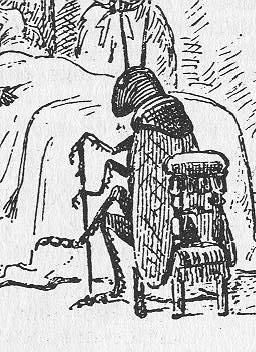
Conformity
Follow the Flock
Are we more vulnerable to peer pressure depending on certain features?
Posted October 18, 2018
Have you ever tried a cigarette? I have. I was a teen, and holding a cigarette looked pretty cool, but smoking seemed disgusting, and it left a horrible smell in my hair, clothes, and fingers. So I didn’t get hooked. But, seriously, why did I even try it in the first place?
It is quite simple, really. Peer pressure.
Peer pressure tends to be more aggressive in teenage environments, but we are certainly not free from it when we become adults. We tend to think that peer pressure is a cultural thing; we want to “look cool” or “not lose face” in front of others, so we become part of a flock. However, the research out there suggests that this is more than a cultural thing. In fact, it might be “hard-wired” in our brains, as Dr. Laurence Steinberg, a psychology professor at Temple University, suggests in his book Age of Opportunity: Lessons From the New Science of Adolescence.
But peer pressure is not only about looking cool in front of your friends, and it is not just a temporary “hazard” that teenagers are exposed to. If peer pressure pushes the teenager in the wrong direction, it can increase risk for permanent consequences in their adult lives, such as addiction.
Of Mice (and Rats) and Men
In a study that analyzed the behavior of humans, adolescents and adults (aged 18 and older) were promised $100 if they performed a simple task correctly. The researchers found that being watched by peers had an influence on the actions of the individual. In sight of an exciting reward, adolescents performed worse in the presence of their peers than when they were alone. Adolescents seemed to take more risks at performing the task, in order to get the reward, rather than concentrating on doing it right, but only when they were watched by their peers.
Researchers interpreted these results as a lack of self-control that was worsened when surrounded by friends. It is easy to imagine that this is what happens when teenagers are first exposed to substances of abuse.

Peer pressure creates an environment of social stress, especially –but not exclusively– for teenagers, who are constantly worried about fitting in. And with social stress, alcohol and substance abuse are more likely to arise. Even though they know alcohol and drugs are bad for them, peer pressure can play an important role in making adolescents lose self-control and ignore Jiminy Cricket.
To fully understand how peer pressure and social stress during adolescence can determine risky behavior (alcohol and drug use, for instance), we need to understand the neuroscience behind it. Much of this research happens first in mice and rats. Although they have very different social habits than humans, they’re hard-wired similarly to us, and the amount of information about social behavior that we can get from animal research is invaluable.
Steinberg’s lab studied peer pressure in mice and worked out if other characteristics such as sex, age, and isolation influenced the time they spent drinking. Researchers found that adolescent mice surrounded by their mouse friends tended to increase their trips to the ethanol drinking valve. In the case of adult mice, there was no difference in drinking whether or not they were surrounded by their fellow mice.
They also found a stronger effect of peer pressure among male mice, compared to females, although adolescent females were still drinking more than the adult female mice.
But does binge drinking during adolescence predispose them to become adult addicts?
Studies in rats showed that exposure to alcohol during adolescence seemed to make the rats more prone to binge drink as adults, compared to those that didn’t taste alcohol in their teenage years. Peer pressure can play a crucial role in an adolescent trying alcohol or other substances for the first time, and possibly defining its future addictions.
According to the National Institute of Alcohol Abuse and Alcoholism (NIAAA), in 2015 2.3% of boys aged 12-18 suffered from AUD (Alcohol Use Disorder) as did 2.7% of girls in the same age group. However, 8.4% of adult men dealt with an AUD, compared to only 4.2% of women. This seems to indicate that teenagers tend to drink regardless of their sex, whereas in adults the numbers seem to show a higher incidence of alcoholism in men. These statistics don’t provide us with enough details to know whether the adults with AUDs were exposed to alcohol as teenagers.
Social stressors, such as peer pressure, during adolescence can trigger future risky behavior, due to the development of anxiety and depression, as well as alcoholic habits in their adult life. A recently published article in Scientific Reports looked into how specifically social isolation (check out my previous post on this topic) during adolescence made the mice more likely to consume alcohol, or nicotine, later in life. It is worth noting that these researchers found the effects of social stress to differ depending on the genetic background of the adolescent mice, meaning that genes may contribute to the odds of developing future risky behavior.
Do it ‘cause You Want to
What are all these results telling us?
Are we more vulnerable to peer pressure depending on our genes? Our sex? Our age? Research seems to hint that this is the case. This doesn’t mean that there is nothing to be done and we have to accept our fate.

Peer pressure also affects adults to a great extent, but research seems to be highly focused on teenagers and the possible detrimental consequences for the sake of developing prevention approaches.
Being aware that certain populations (allegedly male adolescents in certain social settings) could be more at risk of being influenced by peer pressure, we as a society should offer more resources and support to these particularly vulnerable groups, and try our best to prevent serious long-term consequences such as addiction.
In the meanwhile, drink that beer only if you want to, not because your friends are doing it.
This post was originally published in NeuWrite San Diego.
References
Breiner K, Li A, Cohen AO, et al. Combined effects of peer presence, social cues, and rewards on cognitive control in adolescents. Developmental Psychobiology. 2018;60:292–302. https://doi.org/10.1002/dev.21599
Logue, S. , Chein, J. , Gould, T. , Holliday, E. and Steinberg, L. (2014), Adolescent mice, unlike adults, consume more alcohol in the presence of peers than alone. Dev Sci, 17: 79-85. doi:10.1111/desc.12101
Leslie R. Amodeo, Derek N. Wills, Manuel Sanchez-Alavez, William Nguyen, Bruno Conti, Cindy L. Ehlers, Intermittent voluntary ethanol consumption combined with ethanol vapor exposure during adolescence increases drinking and alters other behaviors in adulthood in female and male rats, Alcohol, Volume 73, 2018, Pages 57-66, ISSN 0741-8329, https://doi.org/10.1016/j.alcohol.2018.04.003.
Caruso, M. J., L. R. Seemiller, T. B. Fetherston, C. N. Miller, D. E. Reiss, S. A. Cavigelli and H. M. Kamens (2018). "Adolescent social stress increases anxiety-like behavior and ethanol consumption in adult male and female C57BL/6J mice." Scientific Reports 8(1): 10040.


